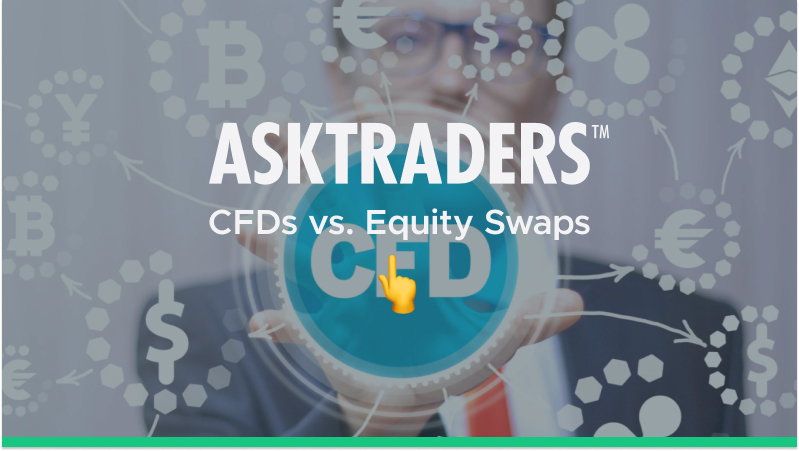Because CFDs allow you to profit off a leveraged amount and trade on margin, they have become popular trading tools despite the risks they carry. One of the main attractions is entering elite financial markets without exhausting all of your capital on hand. Another type of derivative finding as much favour is an equity swap.
YOUR CAPITAL IS AT RISK

This involves two parties agreeing in advance to swap a set of defined cash flows at a predetermined time. It’s easy to confuse these two types of derivatives, and while there are indeed overlaps, there are also some specific differences. So let's pit CFD vs equity swap to compare.
Because CFDs allow you to profit off a leveraged amount and trade on margin, they have become popular trading tools despite the risks they carry. One of the main attractions is entering elite financial markets without exhausting all of your capital on hand. Another type of derivative finding as much favour is an equity swap.
Table of contents
Similarities and Differences between CFDs and equity swaps
| Similarities | Differences |
|---|---|
| They are both derivative instruments | With an equity swap, you can only swap equity or equity indices; you can use considerably more in CFDs, including shares, commodities, forex, cryptocurrencies, and more |
| In each case, you don’t need to own the underlying asset to benefit from market fluctuations. | Technically, CFDs don’t have an expiration date because you can renew them, but equity swaps are performed for a fixed, predetermined period. |
| You definitely won’t get dividends from equity swaps, but you may do so in CFDs if shares are involved. |
How CFDs and Equity Swaps Differ
1. Leverage
Grasping the notion of using leverage is essential to understanding how CFDs work. As a trader, you don’t need to come up with the cash for the full amount of the trade; you only need a fraction of it.
You can profit in multiples of what you deposit, but you can also lose a lot more than you put down. Therefore, it should be evident that you can also go long or short in a position.
2. Interest Payments
As a CFD trader, one of the most important CFD advice pieces is understanding how you derive benefits and incur costs that will depend on whether you’ve taken a long or short position.
If you’re in a long position, you’ll have daily payment obligations, but you’ll benefit in the form of a dividend from underlying equity, such as a share. Conversely, if you have a short position, you will have dividend payment costs to give out.
However, because of short-selling the underlying equity, you’ll receive daily interest payments.
When calculating expenditure and gains on CFDs, do not forget to take interest rate movements into account. They will fluctuate depending on what the market is doing and how volatile an asset can also play a role.
3. Market Accessibility
The vast market choice is probably one of the most attractive aspects; you can choose from cryptocurrencies, commodities, shares, and more. Technically, there’s no expiration date.
You are free to renew and extend your CFD trades as long as you like. This sets it apart from futures or options, which come with a definite end date.
4. Equity Swaps and Their Defining Features
In an equity swap, you and another party exchange future cash flows (known as “legs”) over a set regular period. The difference is that there is no underlying security that determines the value.
One leg is pegged against a floating rate; this is known as the “floating leg.” The other leg is based on the performance of a stock or market index. This floating vs. equity leg exchange is at the heart of a swap.
For example, one leg could be based on a stock index while another is pegged to a foreign currency. They are also known as index return swaps. Cash flows are sometimes stipulated in advance, although they are typically exchanged at the end of a swap agreement.
5. Tax Advantages
If you structure an equity swap correctly, you can avoid paying capital gains tax.
When you start to learn how to trade CFDs, you must become familiar with CFD’s intricacies versus an equity swap.
Each of these is risky enough on its own, but if you get them confused, you could make a very regrettable mistake. You can start trading CFDs with our partner broker, eToro, here.













